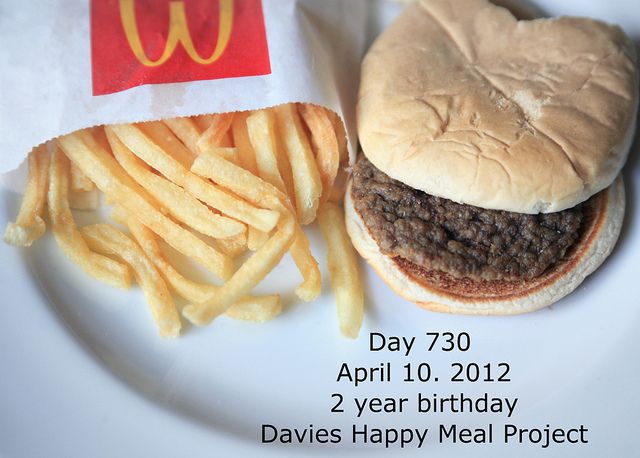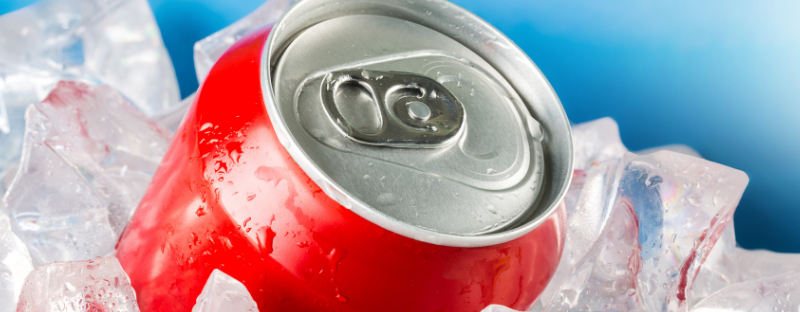Preservatives Are the Real Hidden Danger in Fast Food

Fast Food. Processed Foods. These are some of the most chemically laden things we put into our bodies. Have you seen the cheeseburger and fries that survived two and a half years without decomposing? What are those preservatives doing to our bodies? What ARE we actually eating??
For most people, there’s nothing more satisfying than a fast food meal of a cheeseburger and fries. We all know it’s not the healthiest meal available due to the high amounts of sodium, fat and calories, but there are other hidden dangers lurking in these meals. These foods have gained an unwanted popularity for having the same appearance years after the date they are purchased.
Two eighth grade schoolgirls put this theory to the test. The young ladies found that due to the preservatives in our fast food, a cheeseburger and fries can survive for two and a half years without decomposing. They earned first place for their efforts.
Back in October, 2014, Catherine Goffard and Ava Van Straten, who entered the Notre Dame Academy Science Fair in Wisconsin, stored several fast food cheeseburgers and fries in open jars kept at room temperature. Two and a half years later, the results were very interesting. Slight molding only occurred in one cheeseburger; the rest of the food had no bacteria growth. They young ladies compared the fast food meal to a healthier cheeseburger and fries meal that was prepared using fresh, local products. When they let the healthier meal sit for one week, it was covered in mold.
There was a reason why the girls were interested in this food experiment exposing how preservatives can affect foods. “We want them to know what’s in these burgers that causes them to not mold, and how they’re unhealthy to eat,” said Ava.
Catherine added, “It makes you kind of think, like, ‘What am I actually eating?’ because there are so many other things that are not included in their ingredients list that are definitely dangerous for you.”

Over the last decade, lots of stories have been written about the after lives of fast food meals. Here’s a breakdown of some of the preservatives that can be found in the very popular fast food meal of burger and fries:
TBHQ
French fries can sometimes keep their crispy look because of TBHQ, which is a simpler way of referring to tertiary butylhydroquinone. TBHQ is a petroleum-based substance used to stop fats and oils from oxidizing, but TBHQ is also used in butane lighters, lacquer and varnish. Children are more prone to experience nausea, vomiting and tinnitus, or hearing loss, when exposed to this substance.
Calcium Sulfate
Hamburger buns stay mold-free thanks to ingredients like calcium sulfate. It is usually listed among most fast food restaurants’ nutritional data information, but it doesn’t mean it isn’t a questionable ingredient to include in a food product. This crystalline powder is white, odorless and more commonly used for vehicles, plastics, metal and pesticides.
Additives
Many hamburgers contain as little as 2 percent meat and instead contain ingredients normally found in hamburgers like blood vessels, nerves, plant material, cartilage and bone. These beef patties are also high in fat and cooked at high heat, which helps it to lose moisture, thus helping to give it a longer shelf life. Sometimes, a wide variety of additives are used to preserve and texturize the meat, like sodium phosphate and nitrates. Sodium phosphate is considered generally safe but it can disrupt how your body absorbs iron, calcium and magnesium and is not recommended for people with kidney problems. Eating too many nitrates has been linked to a variety of cancers including colorectal and stomach cancers.
Read More:
This article originally appeared at: http://nucific.com/fast-food-experiment/?utm_campaign=arti_lal_dlpa_ppe%7Cc_us-g_b-a_35p-int_n-aud_la10_all%5Epreservative-v02-t00.






